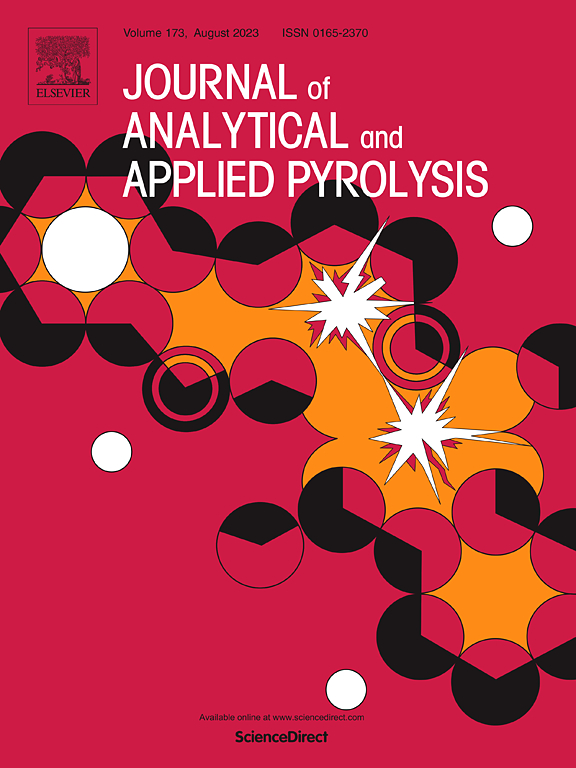Transition-metal-assisted pyrolysis to recover glass fibers from end-of-life wind turbine blades
IF 5.8
2区 化学
Q1 CHEMISTRY, ANALYTICAL
引用次数: 0
Abstract
The disposal of end-of-life wind turbine blades (WTBs), typically composed of glass fiber-reinforced epoxy resin thermosetting composites, has become a global environmental challenge. Pyrolysis is an effective method for recycling these WTBs, but the process often leads to significant degradation of recovered fibers due to high pyrolysis temperatures. This study proposed a transition-metal-assisted pyrolysis method to enhance the low-temperature depolymerization of end-of-life WTBs, enabling the recovery of glass fibers with improved mechanical properties. With the assistance of ZrCl4, the resin decomposition ratio of WTBs at 350 °C increased from 52.13 % to 75.59 %, and the tensile strength of the recovered glass fibers improved by 34.74 %. Characterization studies revealed that Zr4 + ions accelerated the breakdown of C-O-C bonds within the epoxy resin, promoting its decomposition. Additionally, Zr4+ ions weakened polycondensation and dehydrogenation reactions during the formation of pyrolysis char, reducing its degree of graphitization and improving its oxidative reactivity, thereby shortening the oxidation duration. Consequently, the diffusion of surface defects in the recovered fibers was suppressed, significantly enhancing their mechanical properties. These findings offer valuable insights into addressing the disposal of end-of-life WTBs while simultaneously recovering glass fibers with excellent mechanical properties, thus supporting their circular utilization.
过渡金属辅助热解从报废的风力涡轮机叶片中回收玻璃纤维
风力涡轮机叶片(WTBs)通常由玻璃纤维增强环氧树脂热固性复合材料组成,其报废处理已成为全球环境挑战。热解是回收这些垃圾的一种有效方法,但由于热解温度高,该过程往往导致回收纤维的严重降解。本研究提出了一种过渡金属辅助热解方法,以增强废弃wtb的低温解聚,使玻璃纤维的回收具有更好的力学性能。在ZrCl4的辅助下,350 ℃下wtb的树脂分解率由52.13 %提高到75.59 %,回收玻璃纤维的抗拉强度提高34.74 %。表征研究表明Zr4 +离子加速了环氧树脂内部C-O-C键的破坏,促进了环氧树脂的分解。此外,Zr4+离子减弱了热解炭形成过程中的缩聚和脱氢反应,降低了热解炭的石墨化程度,提高了热解炭的氧化反应活性,从而缩短了氧化时间。因此,表面缺陷在回收纤维中的扩散被抑制,显著提高了其力学性能。这些发现为解决废弃垃圾的处理问题提供了有价值的见解,同时回收具有优异机械性能的玻璃纤维,从而支持其循环利用。
本文章由计算机程序翻译,如有差异,请以英文原文为准。
求助全文
约1分钟内获得全文
求助全文
来源期刊
CiteScore
9.10
自引率
11.70%
发文量
340
审稿时长
44 days
期刊介绍:
The Journal of Analytical and Applied Pyrolysis (JAAP) is devoted to the publication of papers dealing with innovative applications of pyrolysis processes, the characterization of products related to pyrolysis reactions, and investigations of reaction mechanism. To be considered by JAAP, a manuscript should present significant progress in these topics. The novelty must be satisfactorily argued in the cover letter. A manuscript with a cover letter to the editor not addressing the novelty is likely to be rejected without review.

 求助内容:
求助内容: 应助结果提醒方式:
应助结果提醒方式:


